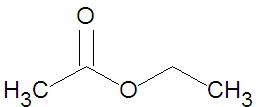Ester: Difference between revisions
Jump to navigation
Jump to search

imported>David E. Volk (ethyl acetate pic) |
imported>David E. Volk mNo edit summary |
||
| Line 1: | Line 1: | ||
{{subpages}} | {{subpages}} | ||
[[Image:Ethyl Acetate stickfigure.jpg|right|thumb|350px|{{#ifexist:Template:Ethyl Acetate stickfigure.jpg/credit|{{Ethyl Acetate stickfigure.jpg/credit}}<br/>|}}Ethyl acetate, a small ester.]] | [[Image:Ethyl Acetate stickfigure.jpg|right|thumb|350px|{{#ifexist:Template:Ethyl Acetate stickfigure.jpg/credit|{{Ethyl Acetate stickfigure.jpg/credit}}<br/>|}}Ethyl acetate, a small ester.]] | ||
In chemistry, an '''ester''' is a chemical compound that contains a carbonyl functionality attached to an alkoxide. Esters are widely used in the food industry as artificial flavors. Small esters can be used as solvents. | In chemistry, an '''ester''' is a chemical compound that contains a carbonyl functionality attached to an alkoxide. Esters are widely used in the food industry as artificial flavors. Small esters can be used as solvents. Esters are generally synthesized from in a condensation reaction between a [[carboxylic acid]] and an [[alcohol]]. | ||
== ester synthesis== | |||
The ester ethyl acetate (shown in the figure) can be produced from the [[condensation reaction]] between [[acetic acid]] and [[ethanol]]. | |||
Revision as of 20:22, 11 January 2008
In chemistry, an ester is a chemical compound that contains a carbonyl functionality attached to an alkoxide. Esters are widely used in the food industry as artificial flavors. Small esters can be used as solvents. Esters are generally synthesized from in a condensation reaction between a carboxylic acid and an alcohol.
ester synthesis
The ester ethyl acetate (shown in the figure) can be produced from the condensation reaction between acetic acid and ethanol.
